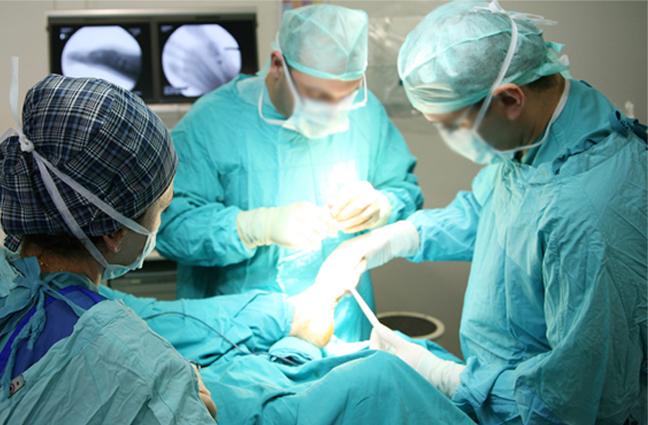Tumor Reconstruction
In patients with aggressive, large bone tumors of the extremities, improvements in radiologic imaging modalities, adjuvant therapy, and orthopaedic oncologic surgerical techniques have made it possible to preserve and salvage limbs instead of amputating them. Improvements in reconstructive procedures and the materials used in reconstruction have led to excellent functional outcomes. Different surgical modalities and reconstructive techniques are used depending on the specific diagnosis and the stage of the disease.
Metastatic disease to bone does not usually require wide surgical margins, unless there is an isolated metastatic focus of certain carcinomas. The reconstructive goal in patients with metastic bone disease is directed toward early mobilization of the patient in the postoperative period. Therefore, more intramedullary fixation methods are used because of their strength and because of the ability to treat the entire diaphyseal bone segment. Similarly, surgical management of benign bone tumors includes removal by intralesional operative procedures, which results in the osseous defect that can be filled with various products including allograft and autograft chips, coral, hydroxyapatite compounds, or polymethyl methacrylate bone cement. The last mentioned allows for immediate structural stability, so it often used in the treatment of pathologic fractures in metastatic bone disease.
In contrast to benign bone tumors and metastatic bone disease, the primary goal of treating some aggressive or recurrent benign bone tumors and malignant bone sarcomas is a negative surgical margin. This goal requires an aggressive surgical resection, which results in a large osseous defect. The reconstructive procedure is therefore more challenging than just filling a cavity with nonsurgical bone chips or other bone fillers.
No Image Available




